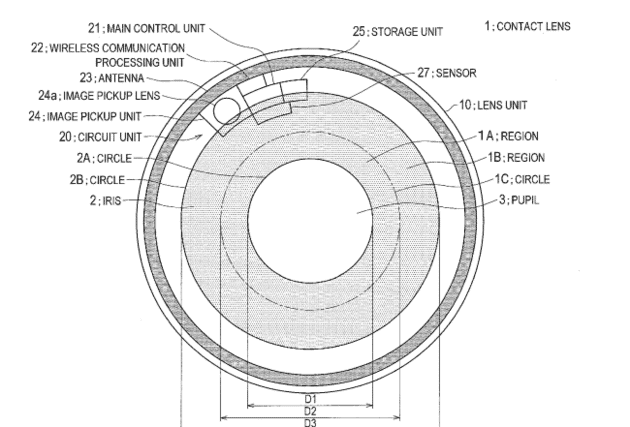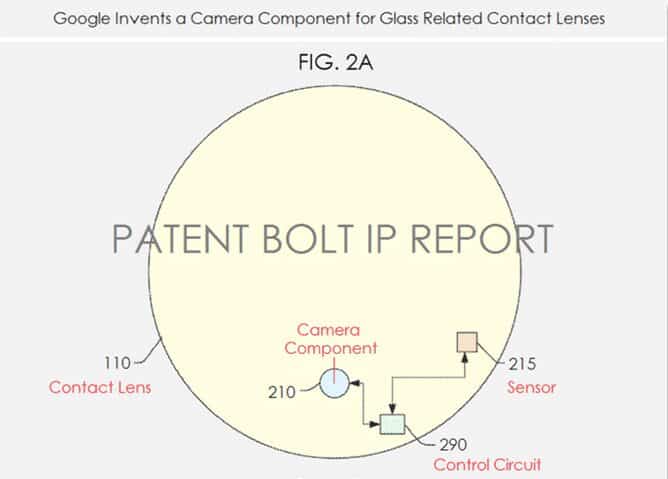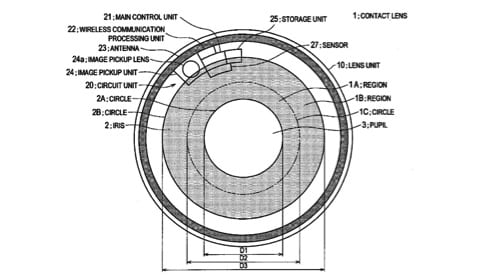We’re not sure whether Google’s new contact lens patent should be seen as a wearable or VR. Maybe both. Whatever it is, Google’s patent is for a device that is injected directly into your eyeball. Initially, it’s as a way to improve vision. In the future it could be so much more.
Wearables as the Future of VR?
Here’s details from Forbes:
Described in a patent application dated April 28, 2016, the device is injected in fluid that then solidifies to couple the device with the eye’s lens capsule, the transparent membrane surrounding the lens. Injection would take place ‘following the removal of the natural lens from the lens capsule,’ the patent reads.
Of course, if you can correct vision, you can enhance it. And down the road a bit, you could transform it. So long, big bulky VR headsets. Or even the eyewear that Zuckerberg talked about the other week at the F8 developer conference. This would make our current headset solutions look like ENIAC, one of the main computers that you worked inside of, instead of a laptop.
Google has already done work in this area with a patent for contact lens that measures glucose levels. But this is radically different. Basically, it’s injecting a package of miniaturized components, including ” . . . storage, sensors, radio, battery and an electronic lens.” This “computer in your eyeball” would then communicate with an external processor that handles the heavy lifting.

And that little matter of power? There’d be an “energy harvesting antenna” to make sure you don’t drain your battery. Though it’s a little hard to imagine what the implications would be for actually running out of power. That ubiquitous search for power we all see at airports would take on a whole new urgency.
Not Buck Rogers Stuff
 As far fetched as this seems, it’s not as outlandish as it sounds. Google took a patent a few years back on a contact lens incorporating a microcamera (so long, selfie-sticks).
As far fetched as this seems, it’s not as outlandish as it sounds. Google took a patent a few years back on a contact lens incorporating a microcamera (so long, selfie-sticks).
And Samsung and Sony have also staked claims in the embedded / eye wearable camera department. In fact, the Sony patent is remarkable. According to PetaPixel,
Not only does the patent show a contact lens with a built-in camera, storage, and transmission unit, the patent says the lens would contain autofocus, zoom, aperture control, and even image stabilization.

Blink your eye, take a photo.
It’s simply beyond the wildest dreams of everyone in the history of photography from Louis-Jacques-Mandé Daguerre (1787–1851) to Edwin Land, the hero to Steve Jobs and inventor of the Polaroid Camera. But as Land once said,
The world is like a fertile field that’s waiting to be harvested. The seeds have been planted, and what I do is go out and help plant more seeds and harvest them.
The seeds are already growing for eye implants. In a few years, it may be harvest time.
VR through Wearables
It’s an exciting time in VR right now, but truth is, it’s an awkward time. Wearing your phone on your face, strapping on bulky headsets, tripping over cables and lugging around high-powered computers to do your virtual reality.
Seriously? It’s the equivalent of a 1950’s mainframe on your face.
The solution will be the convergence of wearables and virtual reality. Immersive vision that’s just there when you want it, off when you don’t.
The hardware is going to shrink down rapidly, first to fashionable eyewear, and then embedded devices. We’ll have AR and VR as we walk down the street, work in a meeting or sit in a classroom. It will have a profound impact on our social relationships, the way we work, and the way we learn.
None of us has a clue as to where we’re headed, but it’s utterly fascinating.
Emory Craig is a writer, speaker, and consultant specializing in virtual reality (VR) and generative AI. With a rich background in art, new media, and higher education, he is a sought-after speaker at international conferences. Emory shares unique insights on innovation and collaborates with universities, nonprofits, businesses, and international organizations to develop transformative initiatives in XR, GenAI, and digital ethics. Passionate about harnessing the potential of cutting-edge technologies, he explores the ethical ramifications of blending the real with the virtual, sparking meaningful conversations about the future of human experience in an increasingly interconnected world.

